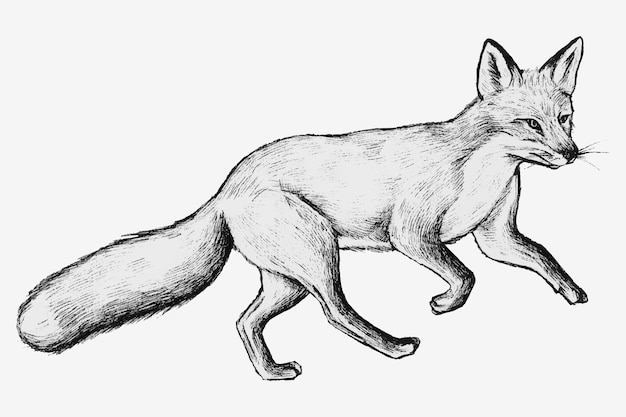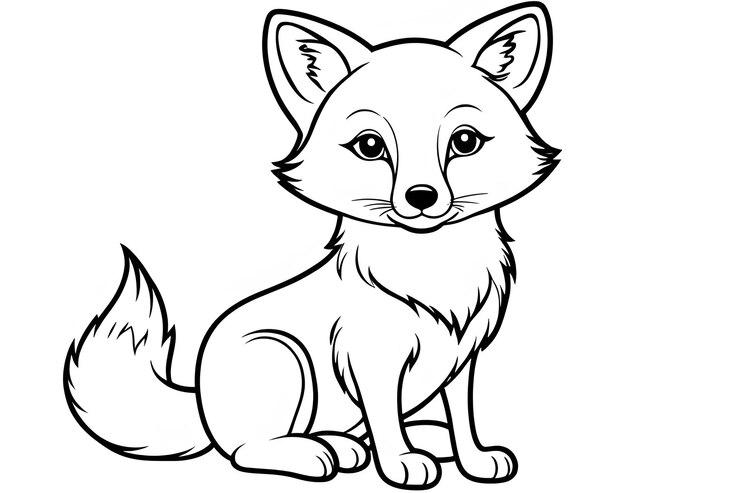Discover a comprehensive guide on drawing:1enzi6g2cvg= fox, from basic shapes to advanced techniques. Learn how to capture the beauty of foxes with detailed steps and expert tips.
Table of Contents
ToggleIntroduction
Drawing a fox can be an incredibly rewarding artistic endeavor, combining the beauty of nature with the precision of art. Whether you’re an experienced artist or a beginner, understanding the nuances of “drawing fox” involves both technique and creativity. This comprehensive guide will walk you through every step, from basic shapes to detailed finishes, ensuring you capture the essence of a fox with your drawings.
Understanding the Basics of Drawing:1enzi6g2cvg= Fox
When embarking on a “drawing fox” project, it’s crucial to grasp the fundamental anatomy of the fox. Foxes, with their slender bodies and bushy tails, have unique features that set them apart from other animals. Begin by observing the overall structure—notice the proportion of the head to the body, the length of the legs, and the characteristic bushiness of the tail. This foundational understanding will provide a solid base for your drawing, allowing you to create a more accurate and lifelike representation of a fox.
Sketching the Basic Shapes
The initial phase of “drawing fox” involves sketching basic shapes that will form the structure of your fox. Start by drawing a large circle for the head, ensuring it is proportionate to the body you will add later. Attach a smaller circle or oval for the snout, slightly overlapping the head circle. This approach simplifies the complex shape of a fox into manageable parts. Next, sketch an elongated oval for the body, connecting it smoothly to the head. This basic outline sets the stage for adding finer details later on.
Defining the Fox’s Ears and Face
As you move forward in your “drawing fox” process, focus on defining the ears and face. Fox ears are large and triangular, so sketch two prominent triangles on top of the head circle. The positioning of the ears is essential for capturing the characteristic alertness of a fox. Inside the face circle, draw two small circles for the eyes and a small oval or triangle for the nose at the end of the snout. Add a curved line from the nose to the bottom of the face for the mouth, and consider a small curve above the mouth for a gentle smile. These details will bring life to your fox drawing.
Adding Legs and Tail
In the next stage of “drawing fox,” incorporate the legs and tail. Draw four lines extending from the bottom of the body oval to represent the legs. Foxes have slender legs, so keep them relatively thin. At the end of each leg, add small oval shapes for the paws, noting that fox paws are not as pronounced as those of some other animals. For the tail, draw a long, curved line extending from the back of the body. Fox tails are notably bushy, so enhance this by adding jagged lines along the tail’s edge, giving it a fluffy appearance.
Detailing the Fox’s Features
Once the basic shapes are in place, shift your focus to detailing the fox’s features. Begin by adding inner ear lines to the previously drawn triangles. This step is crucial for adding depth and realism to the ears. Next, introduce fur texture to the body and tail by drawing short, curved lines. These lines should follow the natural flow of the fur, providing a realistic texture. Don’t forget to add details to the eyes and nose, such as pupils and shading, which will contribute to the overall expression and liveliness of your fox.
Outlining Your Drawing
To finalize your “drawing fox,” outline your sketch with a darker pen or pencil. This step is essential for defining the shapes and adding contrast to your drawing. Carefully trace over the key lines of your sketch, ensuring that you maintain the details and proportions you’ve worked on. After outlining, take time to erase any unnecessary sketch lines, which will help in cleaning up your drawing and making it look polished and professional.

Coloring Your Fox
Coloring is where your “drawing fox” truly comes to life. Begin by choosing the right colors for your fox. Typically, foxes are colored with shades of orange or reddish fur, with a white belly and black legs and tail tips. Start with a base color for the fur and gradually add layers to create depth and dimension. Use lighter shades for areas that catch light and darker shades for the shadows. Don’t forget to color the eyes and nose, adding a bit of shine to the eyes for a lively touch.
Enhancing the Background
While the focus of your “drawing fox” is the fox itself, adding a background can significantly enhance your drawing. Consider drawing a simple natural setting, such as a forest or meadow, to provide context for your fox. This addition not only complements your fox drawing but also makes it more engaging and visually appealing. Ensure that the background doesn’t overpower the main subject but rather supports and highlights it.
Experimenting with Different Poses
To further your skills in “drawing fox,” experiment with different poses. Foxes are known for their agility and playful nature, so try capturing various actions, such as running, jumping, or resting. Each pose presents unique challenges and opportunities to showcase the fox’s dynamic qualities. Practicing different poses will improve your ability to represent the fox in various contexts and add versatility to your drawing skills.
Using Reference Images
Incorporating reference images into your “drawing fox” practice can be incredibly beneficial. Study photographs or illustrations of real foxes to understand their physical characteristics and behavior. This reference material will provide insights into the fox’s anatomy, fur patterns, and expressions, helping you achieve greater accuracy and realism in your drawing. Additionally, reference images can inspire different styles and approaches for your artwork.
Exploring Different Art Styles
While traditional drawing methods are effective, exploring different art styles can add a unique touch to your “drawing fox.” Consider experimenting with styles such as realism, cartoon, or abstract. Each style offers a different way to interpret and depict the fox, allowing you to express creativity and develop a distinctive artistic voice. Embrace the opportunity to explore and combine various techniques to find what resonates with you.
Practicing Regularly
To master “drawing fox,” regular practice is essential. The more you draw, the more you’ll refine your techniques and develop your artistic skills. Set aside dedicated time for drawing, and don’t be discouraged by initial challenges. Consistent practice will lead to improvement and greater confidence in your ability to capture the essence of a fox.
Seeking Feedback and Critique
Receiving feedback and critique can be invaluable for improving your “drawing fox” skills. Share your work with fellow artists, friends, or online communities to gain insights and suggestions. Constructive criticism can help you identify areas for improvement and inspire new approaches. Be open to feedback and use it as a tool for growth and enhancement in your artistic journey.
Showcasing Your Artwork
Once you’ve completed your “drawing fox,” consider showcasing your artwork. Share it on social media, in art galleries, or through online platforms. Displaying your work not only allows you to receive recognition but also encourages you to continue developing your skills. Don’t hesitate to take pride in your achievements and share your passion with others.

Exploring Advanced Techniques
As you become more comfortable with “drawing fox,” delve into advanced techniques to elevate your artwork. Explore methods such as shading, highlighting, and blending to add more depth and realism to your drawings. Experiment with different tools and materials, such as colored pencils, watercolors, or digital media, to find what best enhances your artistic expression.
Incorporating Personal Style
Developing a personal style is a key aspect of “drawing fox.” While it’s important to understand the basics and techniques, infusing your unique style into your artwork will make it stand out. Experiment with different approaches, colors, and textures to create a drawing that reflects your individual artistic voice and perspective.
Learning from Masters
Studying the work of master artists can provide valuable insights into “drawing fox.” Analyze how renowned artists capture the essence of animals and apply similar techniques to your own work. Learning from the masters can inspire new ideas and approaches, helping you refine your skills and achieve a higher level of artistry.
Maintaining Artistic Motivation
Keeping motivation high is crucial for continued success in “drawing fox.” Set personal goals, celebrate small achievements, and stay inspired by exploring new subjects and techniques. Engage with the art community, attend workshops, and keep your passion for drawing alive. Maintaining enthusiasm will drive your artistic growth and ensure ongoing progress.
Conclusion
Drawing:1enzi6g2cvg= fox is a delightful and enriching experience that combines creativity with technical skill. By following this comprehensive guide, you’ll be equipped to capture the grace and beauty of foxes in your artwork. Embrace each step of the process, from basic shapes to intricate details, and let your creativity shine through.
Read Also: Venezuela National Football Team vs Mexico National Football Team Timeline





